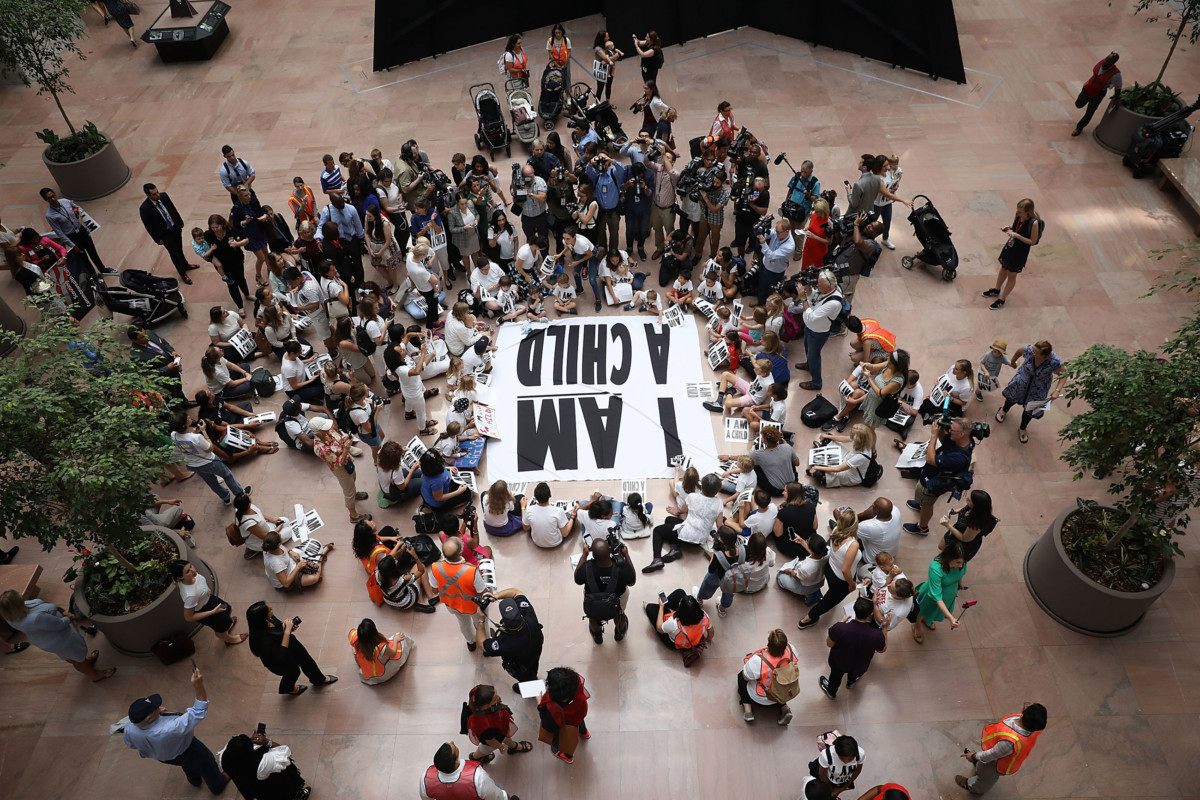The recent images of immigrant children in cages are incredibly painful to digest.
Still, many people seem to forget that the US has a long track record of forcibly separating families, whether it was African Americans during slavery, the Japanese during World War II, Native Americans during colonization, or poor children whose “unfit” single mothers have lost custody today.
Another common way families are forcibly separated? Juvenile detention.
Tens of thousands of teens and pre-teens — most often the poor and people of color — are locked up in substandard, often privatized penal facilities. Children who go through these forced family separations often wind up experiencing trauma, grief, shame, and dehumanization.
The sad reality is incarceration rates are on the rise alongside economic inequality, and children aren’t exempt. Quite often, the only crime these children have committed is that they’re from vulnerable families or suffering from mental health issues.
My son and I personally experienced this.
My son became severely depressed around the time he turned 13. I was a single mother teaching as an adjunct, making less than $20,000 a year, so the treatment he needed wasn’t available to us.
My son got into the criminal “justice” system for the initial petty crime of stealing a pair of sneakers, and he remained there for most of his high school years.
Like so many struggling kids, instead of getting the treatment he desperately needed, he was sent to subpar facilities that made his emotional pain worse. He received no real therapy, and they often refused to give him his required medication or messed it up.
He began to see himself as a number, as a terrible person. I saw myself the same way, because I knew how the court system saw me — as a poor single mother with no husband and a “criminal” son.
From the time he was 14 until he was 18, he was transferred to at least 10 different facilities. I often didn’t know where, because I wasn’t notified. Despite his chronic depression, he was also put in isolation a number of times — a tactic known to increase mental suffering among adult prisoners.
At one point, they put him into an adult jail in isolation for at least a month. He was 17 and had just been released from the psych ward that same day. During his once a week phone calls, I could hear the increasing desperation in his voice, as well as the screaming of other adult prisoners in the background.
As a parent, this experience was devastating and terrorizing. There’s no way to describe it. The trauma from that pain is still real now.
My son is older now, thankfully alive, and doing the hard work of putting his life back together. “Real therapy would have been so helpful,” he told me. “So much pain could have been spared.”
“It really desensitizes people all the way around,” he said of his experience. “It makes you value yourself less and others less, too, since other people see you as a nonhuman.”
No human should ever be treated this way. But while we are wounded, we are not broken.
Social movements are gaining momentum. For example, the immigrant rights movement is growing alongside the Poor People’s Economic Human Rights Campaign and other prison liberation movements.
Separating families due to incarceration, immigration status, mental health, and/or race and class is wrong. If the families impacted by incarceration and other traumas join together with advocates for immigrants, we can create a sea of social change.
As one of my students recently wrote, “There are more of us than them.”
We’re not backing down in the face of Trump’s threats.
As Donald Trump is inaugurated a second time, independent media organizations are faced with urgent mandates: Tell the truth more loudly than ever before. Do that work even as our standard modes of distribution (such as social media platforms) are being manipulated and curtailed by forces of fascist repression and ruthless capitalism. Do that work even as journalism and journalists face targeted attacks, including from the government itself. And do that work in community, never forgetting that we’re not shouting into a faceless void – we’re reaching out to real people amid a life-threatening political climate.
Our task is formidable, and it requires us to ground ourselves in our principles, remind ourselves of our utility, dig in and commit.
As a dizzying number of corporate news organizations – either through need or greed – rush to implement new ways to further monetize their content, and others acquiesce to Trump’s wishes, now is a time for movement media-makers to double down on community-first models.
At Truthout, we are reaffirming our commitments on this front: We won’t run ads or have a paywall because we believe that everyone should have access to information, and that access should exist without barriers and free of distractions from craven corporate interests. We recognize the implications for democracy when information-seekers click a link only to find the article trapped behind a paywall or buried on a page with dozens of invasive ads. The laws of capitalism dictate an unending increase in monetization, and much of the media simply follows those laws. Truthout and many of our peers are dedicating ourselves to following other paths – a commitment which feels vital in a moment when corporations are evermore overtly embedded in government.
Over 80 percent of Truthout‘s funding comes from small individual donations from our community of readers, and the remaining 20 percent comes from a handful of social justice-oriented foundations. Over a third of our total budget is supported by recurring monthly donors, many of whom give because they want to help us keep Truthout barrier-free for everyone.
You can help by giving today. Whether you can make a small monthly donation or a larger gift, Truthout only works with your support.
